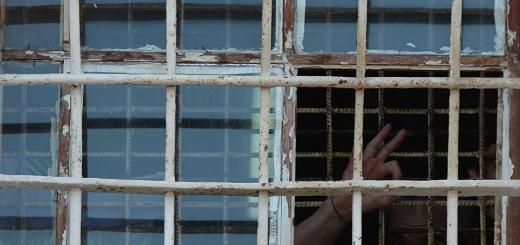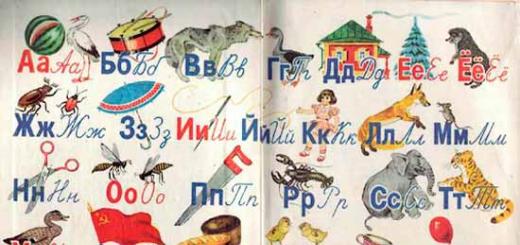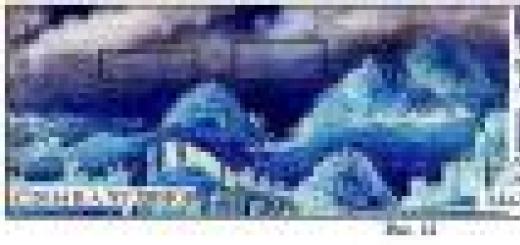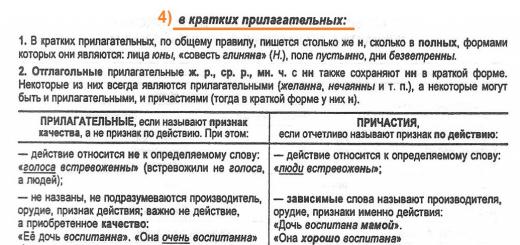You will need
- Pencil Ruler square compass protractor Formulas for calculating angles using arc length and radius Formulas for calculating sides of geometric figures
Instructions
On a sheet of paper, build the base of the desired geometric body. If you are given a parallelepiped or, measure the length and width of the base and draw a rectangle on a piece of paper with the appropriate parameters. To construct a development a or a cylinder, you need the radius of the base circle. If it is not specified in the condition, measure and calculate the radius.
Consider a parallelepiped. You will see that all its faces are located at an angle to the base, but the parameters of these faces are different. Measure the height of the geometric body and, using a square, draw two perpendiculars to the length of the base. Plot the height of the parallelepiped on them. Connect the ends of the resulting segments with a straight line. Do the same on the opposite side of the original one.
From the intersection points of the sides of the original rectangle, draw perpendiculars to its width. Plot the height of the parallelepiped on these straight lines and connect the resulting points with a straight line. Do the same on the other side.
From the outer edge of any of the new rectangles, the length of which coincides with the length of the base, construct the top face of the parallelepiped. To do this, draw perpendiculars from the intersection points of the length and width lines located on the outside. Set aside the width of the base on them and connect the points with a straight line.
To construct a development of a cone through the center of the base circle, draw a radius through any point on the circle and continue it. Measure the distance from the base to the top of the cone. Set aside this distance from the intersection point of the radius and the circle. Mark the vertex point of the side surface. Using the radius of the side surface and the length of the arc, which is equal to the circumference of the base, calculate the sweep angle and set it aside from the straight line already drawn through the top of the base. Using a compass, connect the previously found intersection point of the radius and the circle with this new point. The cone scan is ready.
To construct a pyramid scan, measure the heights of its sides. To do this, find the middle of each side of the base and measure the length of the perpendicular drawn from the top of the pyramid to this point. Having drawn the base of the pyramid on a piece of paper, find the midpoints of the sides and draw perpendiculars to these points. Connect the resulting points with the intersection points of the sides of the pyramid.
The development of a cylinder consists of two circles and a rectangle located between them, the length of which is equal to the length of the circle, and the height is the height of the cylinder.

The development of the surface of a cone is a flat figure obtained by combining the side surface and base of the cone with a certain plane.
Options for constructing a sweep:
Development of a right circular cone
The development of the lateral surface of a right circular cone is a circular sector, the radius of which is equal to the length of the generatrix of the conical surface l, and the central angle φ is determined by the formula φ=360*R/l, where R is the radius of the circle of the base of the cone.
In a number of problems of descriptive geometry, the preferred solution is to approximate (replace) a cone with a pyramid inscribed in it and construct an approximate development, on which it is convenient to draw lines lying on the conical surface.
Construction algorithm
- We fit a polygonal pyramid into a conical surface. The more lateral faces an inscribed pyramid has, the more accurate the correspondence between the actual and approximate development.
- We construct the development of the lateral surface of the pyramid using the triangle method. We connect the points belonging to the base of the cone with a smooth curve.
Example
In the figure below, a regular hexagonal pyramid SABCDEF is inscribed in a right circular cone, and the approximate development of its lateral surface consists of six isosceles triangles - the faces of the pyramid.

Consider the triangle S 0 A 0 B 0 . The lengths of its sides S 0 A 0 and S 0 B 0 are equal to the generatrix l of the conical surface. The value A 0 B 0 corresponds to the length A’B’. To construct a triangle S 0 A 0 B 0 in an arbitrary place in the drawing, lay off the segment S 0 A 0 =l, after which from points S 0 and A 0 we draw circles with radius S 0 B 0 =l and A 0 B 0 = A'B' respectively. We connect the intersection point of circles B 0 with points A 0 and S 0.
We construct the faces S 0 B 0 C 0 , S 0 C 0 D 0 , S 0 D 0 E 0 , S 0 E 0 F 0 , S 0 F 0 A 0 of the pyramid SABCDEF similarly to the triangle S 0 A 0 B 0 .
Points A, B, C, D, E and F, lying at the base of the cone, are connected by a smooth curve - an arc of a circle, the radius of which is equal to l.
Inclined cone development
Let us consider the procedure for constructing a scan of the lateral surface of an inclined cone using the approximation (approximation) method.

Algorithm
- We inscribe the hexagon 123456 into the circle of the base of the cone. We connect points 1, 2, 3, 4, 5 and 6 with the vertex S. The pyramid S123456, constructed in this way, with a certain degree of approximation is a replacement for the conical surface and is used as such in further constructions.
- We determine the natural values of the edges of the pyramid using the method of rotation around the projecting line: in the example, the i axis is used, perpendicular to the horizontal projection plane and passing through the vertex S.
Thus, as a result of the rotation of edge S5, its new horizontal projection S’5’ 1 takes a position in which it is parallel to the frontal plane π 2. Accordingly, S’’5’’ 1 is the actual size of S5. - We construct a scan of the lateral surface of the pyramid S123456, consisting of six triangles: S 0 1 0 6 0 , S 0 6 0 5 0 , S 0 5 0 4 0 , S 0 4 0 3 0 , S 0 3 0 2 0 , S 0 2 0 1 0 . The construction of each triangle is carried out on three sides. For example, △S 0 1 0 6 0 has length S 0 1 0 =S’’1’’ 0 , S 0 6 0 =S’’6’’ 1 , 1 0 6 0 =1’6’.
The degree to which the approximate development corresponds to the actual one depends on the number of faces of the inscribed pyramid. The number of faces is chosen based on the ease of reading the drawing, the requirements for its accuracy, the presence of characteristic points and lines that need to be transferred to the development.
Transferring a line from the surface of a cone to a development
Line n lying on the surface of the cone is formed as a result of its intersection with a certain plane (figure below). Let's consider the algorithm for constructing line n on a scan.

Algorithm
- We find the projections of points A, B and C at which line n intersects the edges of the pyramid S123456 inscribed in the cone.
- We determine the natural size of the segments SA, SB, SC by rotating around the projecting straight line. In the example under consideration, SA=S’’A’’, SB=S’’B’’ 1 , SC=S’’C’’ 1 .
- We find the position of points A 0 , B 0 , C 0 on the corresponding edges of the pyramid, plotting on the scan the segments S 0 A 0 =S''A'', S 0 B 0 =S''B'' 1, S 0 C 0 =S''C'' 1 .
- We connect points A 0 , B 0 , C 0 with a smooth line.
Development of a truncated cone
The method described below for constructing the development of a right circular truncated cone is based on the principle of similarity.

We often encounter surface developments in everyday life, in production and in construction. To make a case for a book (Fig. 169), sew a cover for a suitcase, a tire for a volleyball, etc., you must be able to construct developments of the surfaces of a prism, ball and other geometric bodies. A development is a figure obtained by combining the surface of a given body with a plane. For some bodies, scans can be accurate, for others they can be approximate. All polyhedra (prisms, pyramids, etc.), cylindrical and conical surfaces, and some others have precise developments. Approximate developments have a ball, a torus and other surfaces of revolution with a curved generatrix. We will call the first group of surfaces developable, the second - non-developable.
TBegin-->TEnd-->
TBegin-->  TEnd-->
TEnd-->
When constructing developments of polyhedra, you will have to find the actual size of the edges and faces of these polyhedra using rotation or changing projection planes. When constructing approximate developments for non-developable surfaces, it will be necessary to replace sections of the latter with developable surfaces close in shape to them.
To construct a scan of the lateral surface of the prism (Fig. 170), it is assumed that the scan plane coincides with the face AADD of the prism; other faces of the prism are aligned with the same plane, as shown in the figure. The face ССВВ is preliminarily combined with the face ААВВ. Fold lines in accordance with GOST 2.303-68 are drawn with thin solid lines with a thickness of s/3-s/4. Points on the scan are usually denoted by the same letters as on the complex drawing, but with index 0 (zero). When constructing a development of a straight prism according to a complex drawing (Fig. 171, a), the height of the faces is taken from the frontal projection, and the width from the horizontal one. It is customary to build a scan so that the front side of the surface is facing the observer (Fig. 171, b). This condition is important to observe because some materials (leather, fabrics) have two sides: front and back. The bases of the ABCD prism are attached to one of the faces of the side surface.
If point 1 is specified on the surface of the prism, then it is transferred to the development using two segments marked on the complex drawing with one and two strokes, the first segment C1l1 is laid to the right of point C0, and the second segment is laid vertically (to point l0).
TBegin-->  TEnd-->
TEnd-->
Similarly, a development of the surface of the cylinder of rotation is constructed (Fig. 172). Divide the surface of the cylinder into a certain number of equal parts, for example 12, and unfold the inscribed surface of a regular dodecagonal prism. The sweep length with this construction turns out to be slightly less than the actual sweep length. If significant accuracy is required, then a graphic-analytical method is used. The diameter d of the circumference of the base of the cylinder (Fig. 173, a) is multiplied by the number π = 3.14; the resulting size is used as the development length (Fig. 173, b), and the height (width) is taken directly from the drawing. The bases of the cylinder are attached to the development of the side surface.
TBegin-->  TEnd-->
TEnd-->
If point A is given on the surface of the cylinder, for example, between the 1st and 2nd generatrices, then its place on the development is found using two segments: a chord marked with a thick line (to the right of point l1), and a segment equal to the distance of point A from the upper base of the cylinder , marked in the drawing with two strokes.
It is much more difficult to construct the development of a pyramid (Fig. 174, a). Its edges SA and SC are straight lines in general position and are projected onto both projection planes by distortion. Before constructing the development, it is necessary to find the actual value of each edge. The size of the edge SB is found by constructing its third projection, since this edge is parallel to the plane P3. The ribs SA and SC are rotated around a horizontally projecting axis passing through the vertex S so that they become parallel to the frontal plane of projections P (the actual value of the rib SB can be found in the same way).
TBegin-->  TEnd-->
TEnd-->
After such a rotation, their frontal projections S 2 A 2 and S 2 C 2 will be equal to the actual size of the ribs SA and SC. The sides of the base of the pyramid, like horizontal straight lines, are projected onto the projection plane P 1 without distortion. Having three sides of each face and using the serif method, it is easy to construct a development (Fig. 174, b). Construction begins from the front face; a segment A 0 C 0 = A 1 C 1 is laid out on a horizontal straight line, the first notch is made with a radius A 0 S 0 - A 2 S 2 the second - with a radius C 0 S 0 = = G 2 S 2 ; at the intersection of the serifs, point S„ is obtained. Accept the order side A 0 S 0 ; from point A 0 make a notch with radius A 0 B 0 =A 1 B 1 from point S 0 make a notch with radius S 0 B 0 =S 3 B 3 ; at the intersection of the serifs, point B 0 is obtained. Similarly, the face S 0 B 0 C 0 is attached to the side S 0 G 0 . Finally, a base triangle A 0 G 0 S 0 is attached to side A 0 C 0 . The lengths of the sides of this triangle can be taken directly from the development, as shown in the drawing.
The development of a cone of rotation is constructed in the same way as the development of a pyramid. Divide the circumference of the base into equal parts, for example into 12 parts (Fig. 175, a), and imagine that a regular dodecagonal pyramid is inscribed in the cone. The first three faces are shown in the drawing. The surface of the cone is cut along the generatrix S6. As is known from geometry, the development of a cone is represented by a sector of a circle whose radius is equal to the length of the cone generatrix l. All generatrices of a circular cone are equal, therefore the actual length of the generatrix l is equal to the frontal projection of the left (or right) generatrix. From the point S 0 (Fig. 175, b) a segment of 5000 = l is laid vertically. An arc of a circle is drawn with this radius. From the point O 0, the segments Ol 0 = O 1 l 1, 1 0 2 0 = 1 1 2 1, etc. are laid off. By setting aside six segments, we get point 60, which is connected to the vertex S0. The left part of the scan is constructed in the same way; The base of the cone is attached below.
TBegin-->  TEnd-->
TEnd-->
If you need to put point B on the scan, then draw the generatrix SB through it (in our case S 2), apply this generatrix to the scan (S 0 2 0); rotating the generatrix with point B to the right until it aligns with the generatrix S 3 (S 2 5 2), find the actual distance S 2 B 2 and set it aside from the point S 0. The found segments are marked on the drawings with three strokes.
If it is not necessary to plot points on the cone scan, then it can be constructed faster and more accurately, since it is known that the scan sector angle is a=360°R/l, the radius of the base circle, and l is the length of the cone generatrix.
A development is a figure obtained by combining a surface with a plane. Naturally, a closed surface cannot be combined with a plane without discontinuities. The surface is first cut along certain lines and then aligned with the plane. The construction of surface developments is of great practical interest in the design of various structures and products made from sheet material. The development stores the lengths of the lines lying on the surface, the values of the angles between the lines and the areas of the figures formed by closed lines. To construct a surface development, it is necessary to know the law of transformation of surface guide lines into lines on the development plane and the law of distribution of straight lines corresponding to the surface generatrices. The law for converting a surface into a development can be specified both by analytical dependencies and by a graphical algorithm.
Already in the very first works on descriptive geometry, algorithms for constructing precise developments of a cylinder, cone and torso of a helicoid (an open helical surface) were well developed. Surface development means the alignment of a part (compartment) of a surface with a plane. Part of the cylinder is cut by one of the generatrices and aligned with the plane. The development of the lateral surface of a right circular cylinder is depicted as a rectangle with a height l and length πd, Where l– length of the generatrix of the cylindrical surface, d– diameter of the cylinder base (Fig. 5.19).
Rice. 5.19. Development of a right circular cylinder
In addition to straight lines of bending and torsion, many other straight lines can be drawn on a development, which correspond to geodesic lines on the surface that determine the shortest distances between points on the surface. On a cylindrical and conical surface, the geodesic line is a helix.
The development of a right circular cone is a sector of a circle with a radius l and angle φ , equal to or 2π∙cosβ, Where l– length of the generatrix, d– diameter of the base of the cone (Fig. 5.20). The cone and cylinder are considered as a special case of a surface with a return edge, when the return edge degenerates into a finite and infinitely distant point. The conical surface also has two floors lying on opposite sides of the top of the cone.

Rice. 5.20. Development of a right circular cone
In Fig. 5. 21 shows an example of constructing a development of one floor of a helicoid limited by a return edge (helis - a cylindrical helical line with a diameter d), horizontal planes with a distance between equal h(height h). The surface is cut along the return edge and one of the generatrices and aligned with the plane. The helix on the development is converted into a circular arc with a radius ρ and angle φ . The length of the circular arc is equal to the length of the helix ( L=π d/cosβ). Radius value ρ we determine from the equality 2 π ρ φ/360°= π d/ cosβ. Where ρ = d 180°/ cosβ∙φ. The generators of the helicoid are parallel to the generators of the guide cone, hence the sum of the angles between the generators of the helicoid is equal to the sum of the angles between the guides of the cone ( φ = 2π∙cosβ). If instead φ substitute its value, we get ρ = d / 2cosβ 2.
A surface with a return edge has two floors lying on different sides of the points of contact. If the return edge is a flat curved line, then the surface turns into a plane.
On ruled surfaces of a general type, compression lines can be distinguished (the throat of a single-sheet hyperboloid, the narrowing line of an oblique plane, the striction lines of a cylindroid, etc.), at which nearby generating surfaces intersect. Compression lines are an analogue of the return edge, with the only difference being that the generators do not touch the compression line, but intersect it at some angle. Cylindrical, conical and return-edge surfaces can be obtained from the development plane using bending deformation. Ruled surfaces of a general form are obtained from the development plane using torsional and bending deformations. We also note that it is possible to obtain a surface from the development plane using bending only theoretically, but in practice the presence of compression and tension deformations is inevitable, since there are no products without thickness.
 |
Rice. 5. 21. Development of an involute (open) helicoid
Development of the surface of a straight closed helicoid compartment with a step N and the diameter of the cylindrical helix d is an incomplete ring (Fig. 5.22). The pitch of the helical surface unfolds into the length of an arc of a circle with a diameter d 1, Then, Н = π d 1 ∙ φ/360°. Let's determine the angle φ from the obtained dependence: φ = N ∙360°/π d 1.The helical line unfolds into the length of an arc of a circle with a diameter D. Then, L = πd/cosβ = π D ∙ φ/360°. D = d + d 1. Let's substitute the value D into the previous expression: L = πd/cosβ = π(d + d 1) ∙ φ/360°. Let's determine the angle φ , φ = πd360°/cosβ(d + d 1). Diameter size d 1 can be determined from a comparison of formulas for determining the angle φ : d 1 = Нd cosβ/(π 2 d – Нcosβ) or d 1 = d sinβ/(π –sinβ).

Rice. 5.22. Development of a straight closed helicoid
Development of the surface of a compartment of an annular closed helicoid with a step N and the diameters of the internal and external cylindrical helical lines d And d׳ is also an incomplete ring (see Fig. 5.22). The inner helix unfolds into the length of an arc of a circle with a diameter d'.Then, L׳ = πd/cosβ = πd׳ ∙φ/360°. Let's determine the angle φ , φ = d360°/cosβ d׳. The outer helix unfolds into the length of an arc of a circle with a diameter D. Then, L = πd/cosβ = π D ∙ φ/360°. D = (d – d׳ ) + d 1. Let's substitute the value D into the previous expression: L = πd/cosβ = π(d – d׳ + d 1) ∙ φ/360°. Let's determine the angle φ , φ = d360°/cosβ(d – d׳ + d 1).
The development of the surface of a compartment of an oblique closed helicoid is a twisted ring; the forming surfaces on the development touch a circle of a certain radius. The development of the surface of a compartment of a single-sheet hyperboloid of revolution is also a twisted ring, the forming surfaces on the development touch a circle of a certain radius. The throat of the surface unfolds into the circular arc of the inner circular arc, and the base of the single-sheet hyperboloid unfolds into the circular arc of the outer circular arc. To construct a development of a ruled surface, it is necessary to know the law of transformation of the guide lines of the surface into lines on the development plane and the law of distribution of straight lines corresponding to the generatrices of the surface. The law for converting a surface into a development can be specified both by analytical dependencies and by a graphical algorithm. A development of a ruled surface is constructed for one floor of a limited part of the surface. The division of the surface into floors occurs along the compression line.
If the pattern of transition from the surface to the development is unknown, then an approximate development is constructed. To do this, the surface is replaced by an inscribed or circumscribed polyhedral surface and its development is constructed. If the surface is divided into many triangles, then the method is called triangulation. The construction of a development is associated with determining the natural size of each face. The metric problems discussed in previous lectures are an integral part of constructing a development. Constructing sweeps is a complex metric task in which it is important to rationally organize graphical constructions in order to achieve accuracy and speed of construction.
For a truncated cylinder and a cone, as well as for inclined cylindrical and conical surfaces and other surfaces, approximate developments are constructed, since the issues of constructing developments have not been sufficiently studied: it is necessary to establish a geometric projection relationship between surfaces and their developments.
Let's consider an example of constructing a development of a prism using the rolling method and the normal section method. Let's cut the prism along the edge AA׳ and we will rotate its faces around the edges until they align with the frontal plane passing through the edge AA׳ . Points IN, IN ׳ , WITH And WITH When rotating, they move in planes perpendicular to the ribs (Fig. 5.23). From point A 2 draw an arc of radius A 1 B 1 to the intersection with the perpendicular from AT 2 To A 2 A 2׳ and we get V o. We obtain the remaining points in the same way. Let's attach the lower and upper bases and get a full development of the prism. Let's cut the prism with a plane α , perpendicular to the ribs, and determine the natural size of the section A"B"C" ׳ , for example, combining it with π 1. A normal section unfolds into a straight line A o B o C o.
|

Rice. 5.23. Development of an inclined prism
In practice, developments are also constructed for non-expanding non-ruled surfaces; for this purpose, they are approximated by developable surfaces (they are divided into parts, which are replaced by planes or developable surfaces, i.e., several cylindrical, conical or other surfaces are inscribed or described around them), and then constructed sweeps for them. The resulting development of the entire surface is conditional, since it consists of many individual flat figures; to obtain a surface, they must be glued together and individual sections must be subjected to compression and tension. The greater the number of partitions, the smaller the pieces into which the surface breaks up. This is the fundamental difference between conditional and approximate sweeps.












